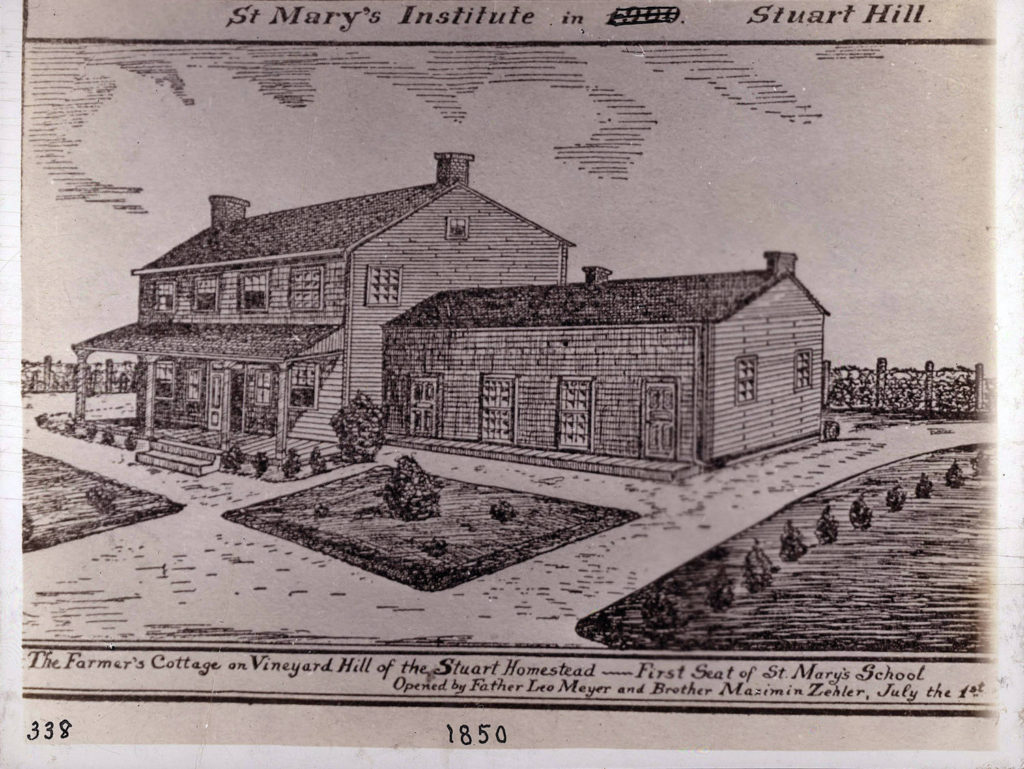
The land that would become the University of Dayton was originally farmland owned by John Stuart, who endured a tragedy in 1848 when daughter Mary Louisa succumbed to cholera. Afterward, Stuart and his wife wished to sell the property, known as Dewberry Farm, and move back to Europe.
They found a willing buyer in Rev. Leo Meyer, who had come to Cincinnati from France to establish an American presence for the Society of Mary. Instead, he was sent north to Dayton’s Emmanuel Church by Cincinnati Bishop John Baptist Purcell to help tend to those afflicted by the cholera epidemic sweeping through the area. In 1850, Father Meyer purchased the 125-acre farm along with the Marianist brothers Maximin Zehler, a teacher, Charles Schultz, a cook, and Andrew Edel, a gardener.
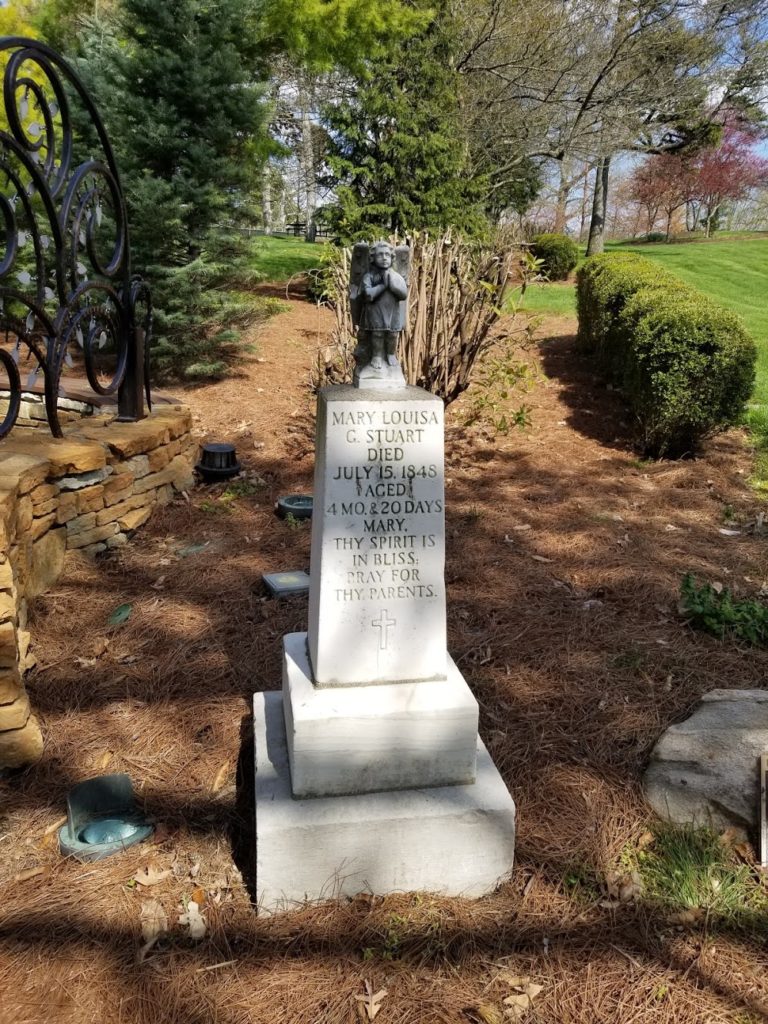 The four men took over the site which was located on top of Stuart Hill with vineyards, an orchard, farm buildings, and a mansion, and renamed it Nazareth. Meyer also promised to retain and care for the grave of Stuart’s daughter also located there (which remains to this day).
The four men took over the site which was located on top of Stuart Hill with vineyards, an orchard, farm buildings, and a mansion, and renamed it Nazareth. Meyer also promised to retain and care for the grave of Stuart’s daughter also located there (which remains to this day).
The school that would eventually become UD opened just months after the sale on July 1, 1850. Originally known as the St. Mary’s School for Boys, it began with just 14 primary students, who were joined that fall by additional boarding students.
The first decade was eventful as the school burned to the ground in 1855, but it was rebuilt and grew to 100 students five years later. From the beginning, the institution was guided by a clear mission: “devotion to Mary, the mother of Jesus (and) an emphasis on education of the whole person, something most productively accomplished within a community.”
Around this time, some of the university’s surviving buildings were constructed, including Zehler Hall (1865), named for Brother Zehler who had become president in 1860. The Chapel of the Immaculate Conception was erected in 1869, and the largest structure to date, five-story St. Mary’s Hall, followed in 1870.
In 1882, the school was awarded the right to confer degrees by the State of Ohio, with the first one earned by a John Hiller in 1889. The school was renamed St. Mary’s College from St. Mary’s Institute in 1912, and in 1920 it took on the current name of the University of Dayton.
Up until the late 1930s the institution also offered elementary and preparatory education in addition to college courses. The Marianist high school eventually moved downtown to the Notre Dame Academy building at Franklin and Ludlow that had been a secondary school for girls run by the Sisters of Notre Dame de Namur. It became Chaminade High School for boys, while the sisters relocated to a larger facility and opened Julienne High School. In 1973, the two schools merged to become today’s Chaminade Julienne High School.
Back at the University of Dayton, coeducation was introduced in 1935 to help boost enrollment during the Great Depression, and two years later enrollment reached 1,000. Following World War II the school received a huge influx of new students, who totaled 2,800 by 1946. The university continued to grow at a rapid pace, and today is the second largest private university in Ohio, with a campus of close to 400 acres and a student body of more than 11,000. In our next article, we’ll take a closer look at the buildings that make up the University of Dayton’s historic campus.
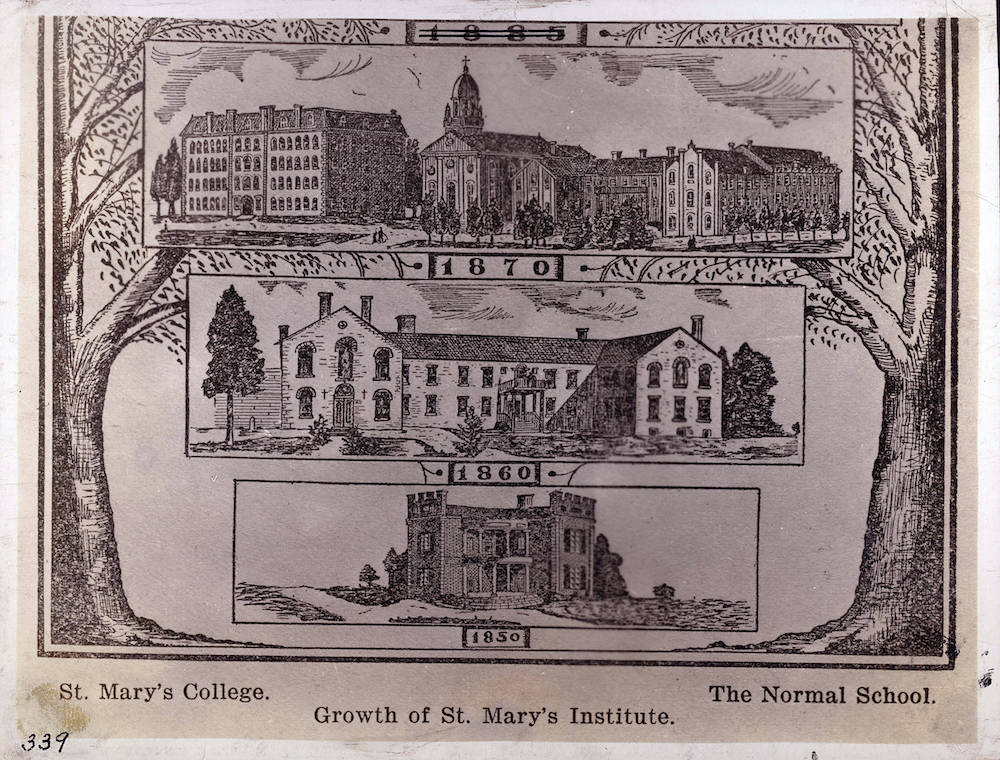
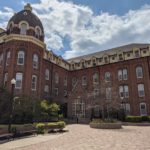
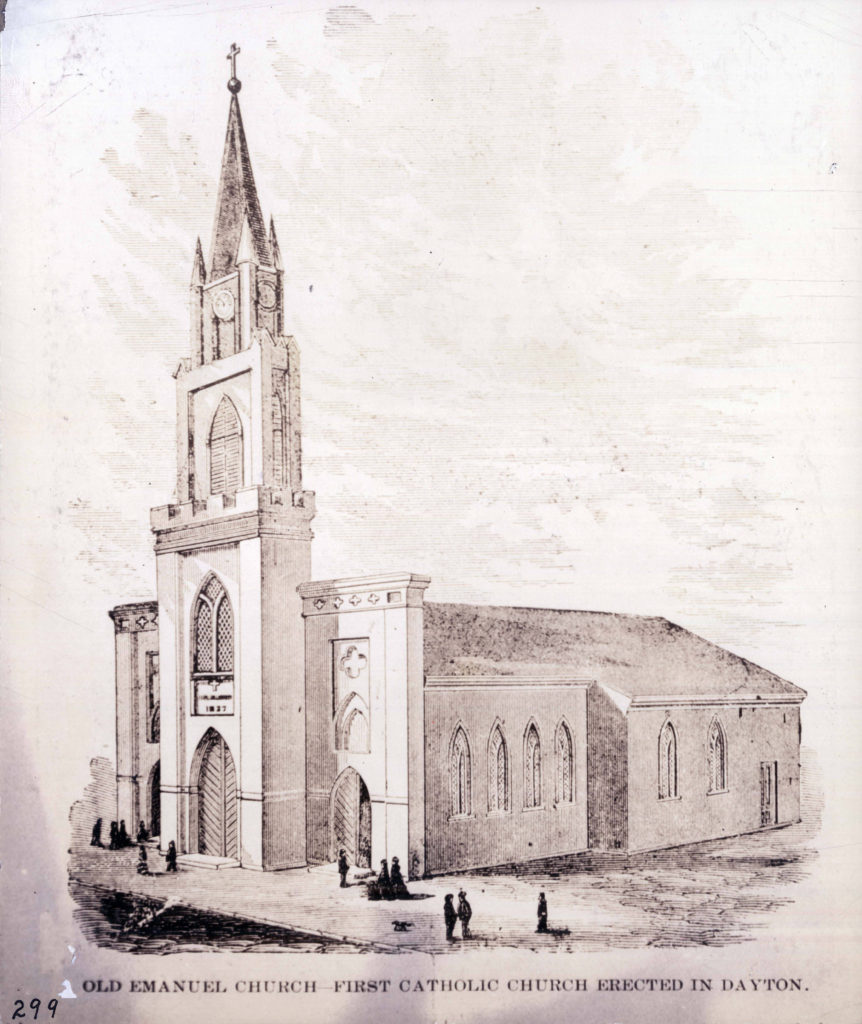
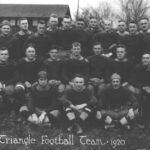
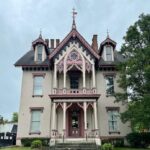
Leave a Reply